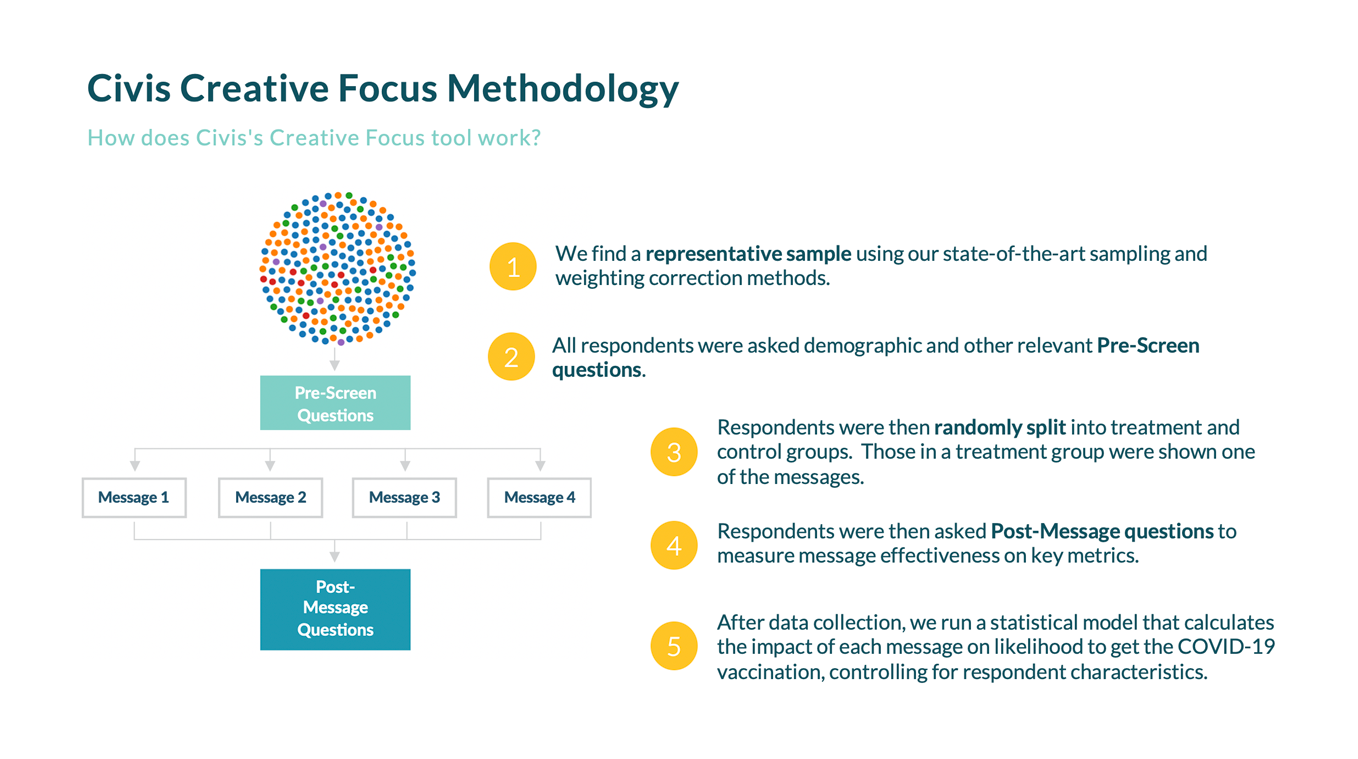The digital divide — the schism separating citizens with efficient access to modern information and communications technologies from those without — continues to disrupt the lives of millions of Americans…
Scientifically identifying the most persuasive messages to encourage vaccination.
Significant investments have been made toward the rapid development of a safe and effective vaccine against SARS-CoV-2 (COVID-19). Even though we are still far from achieving this goal, our research shows once a vaccine is available, there will be a lot of convincing to do, especially in some communities. Roughly a quarter of US adults don’t plan to get vaccinated, and this number is even higher among women and those without a college degree, those making less than $75K per year, and those living in rural areas.
It is critical to start understanding baseline intent to vaccinate and how to persuasively communicate about the importance of vaccination now, given the deluge of misinformation about the virus and heightened distrust.
Leveraging a randomized controlled trial framework (the gold standard approach in clinical trials) and statistical modeling, our Creative Focus tool tested the effectiveness of five different messages at driving intent to get vaccinated against COVID-19. Each message described the importance of vaccination but emphasized a different reason why.
 |
The Safety message aimed to alleviate concerns about the vaccine by highlighting the FDA’s extensive testing process, and emphasizing how a shortened timeline would only impact the cost of development, not safety and effectiveness. |
|
 |
The Economic Recovery message emphasized the economic devastation caused by COVID-19 and the vaccine’s role in an accelerated path to recovery. |
|
 |
The Statistics message leveraged eye-opening data about COVID-19 as a leading cause of death in the US, as well as the prolonged symptoms impacting the quality of life of those who have technically “recovered.” |
|
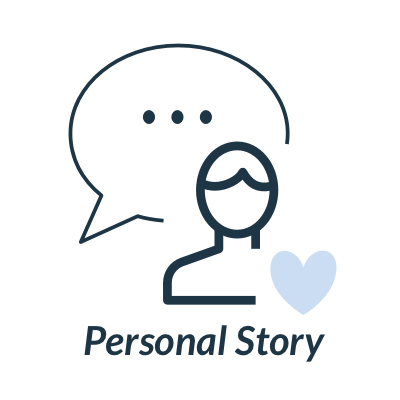 |
The Personal Story message shared the tale of a young, otherwise healthy American who died from COVID-19. |
|
 |
The Community message explained herd immunity and emphasized the vaccine’s role in making communities healthier for everyone, including those who are unable to get vaccinated. |
|
Overall, using a tragic personal story was the most effective approach at driving intent to get vaccinated.
- The Personal Story message resulted in a 5% increase in likelihood to get vaccinated and had no chance of negative backlash (i.e. people responding that they’d be less likely to get vaccinated after seeing a message).
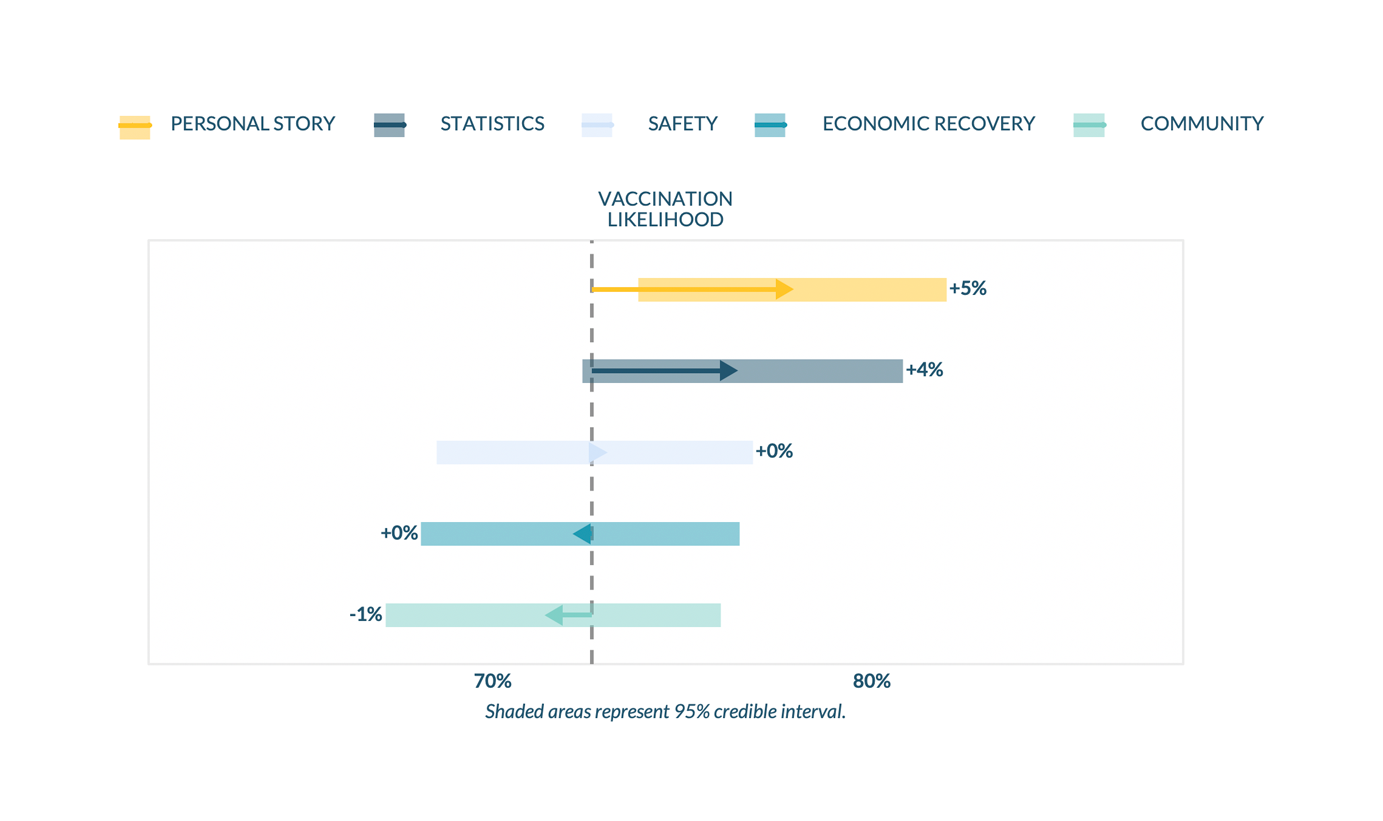
- On the other hand, messages describing vaccine safety, the possibility of a faster road to economic recovery, or the benefit to the community were at best ineffective. At worst, these messages may result in negative backlash.
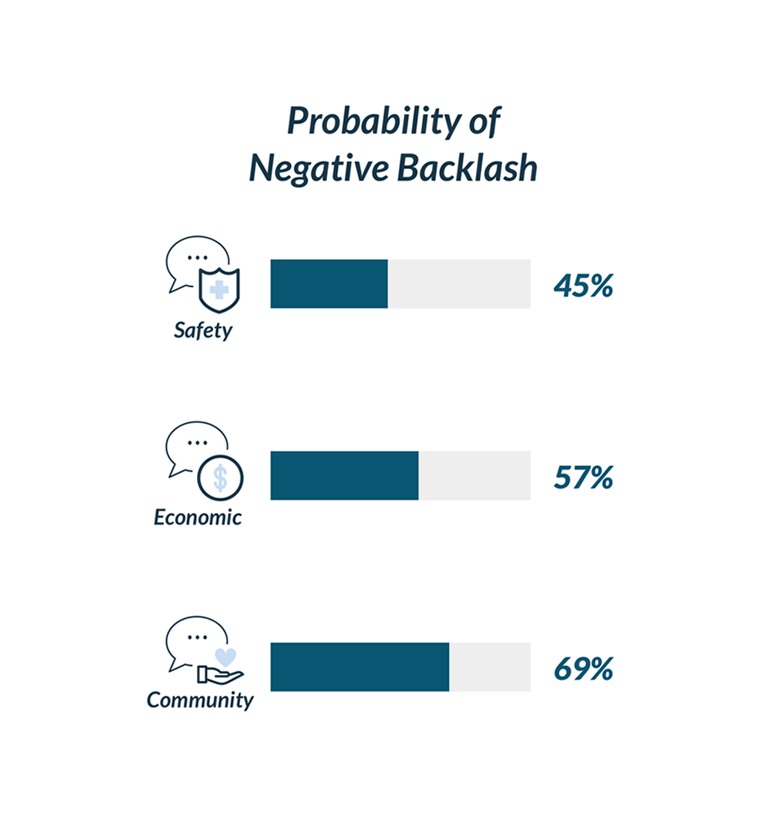
These findings were consistent across age, gender, education, income, race, and urbanicity, although the degree to which each message was effective or not varied slightly by some subgroups.
- Across all demographic and geographic categories, the Personal Story message was most effective, and Economic Recovery, Safety and Community messages were least effective. But for some subgroups, the magnitude of effect was higher or lower. For example, for people who make less than $75K, Personal Story resulted in a 7% increase in intent, higher than the 5% for the overall sample.
- Baseline intent to vaccinate, regardless of message, also differed by subgroup. Intent to get vaccinated is lower among people without a college degree and people with lower income. Women were also less likely to report that they’d get vaccinated than men — the opposite of what we found when testing flu vaccine messages.
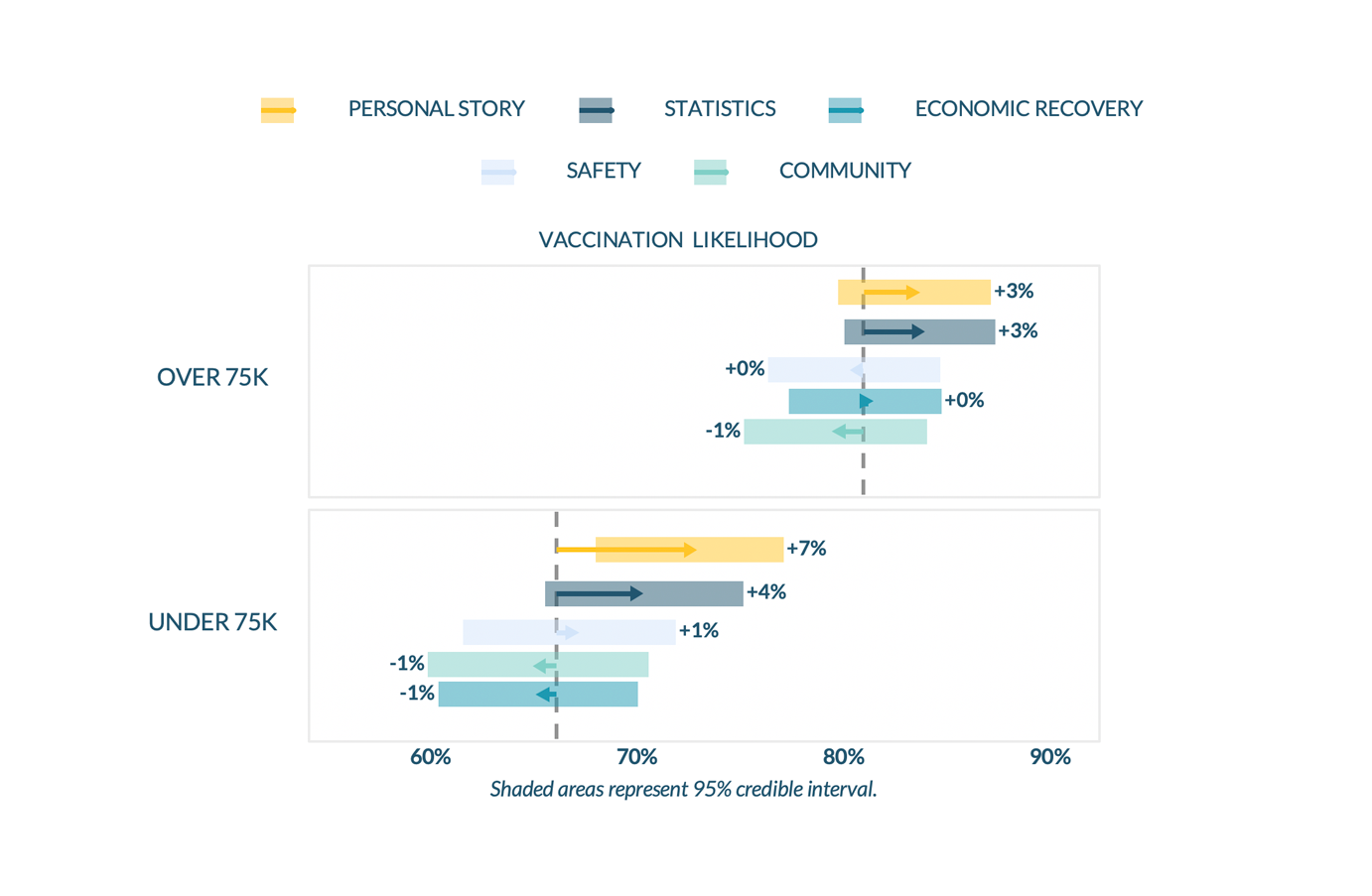
Civis previously conducted similar studies on Flu and HPV vaccine messaging (in 2018 and 2019, respectively).
- Discussing vaccine safety was not the right strategy for HPV either — despite people citing safety as the biggest concern about the HPV vaccine.
- Although personal stories were effective for both flu and COVID-19 vaccine messaging, the “community” theme was most persuasive in the flu research, but ineffective for the COVID vaccine.
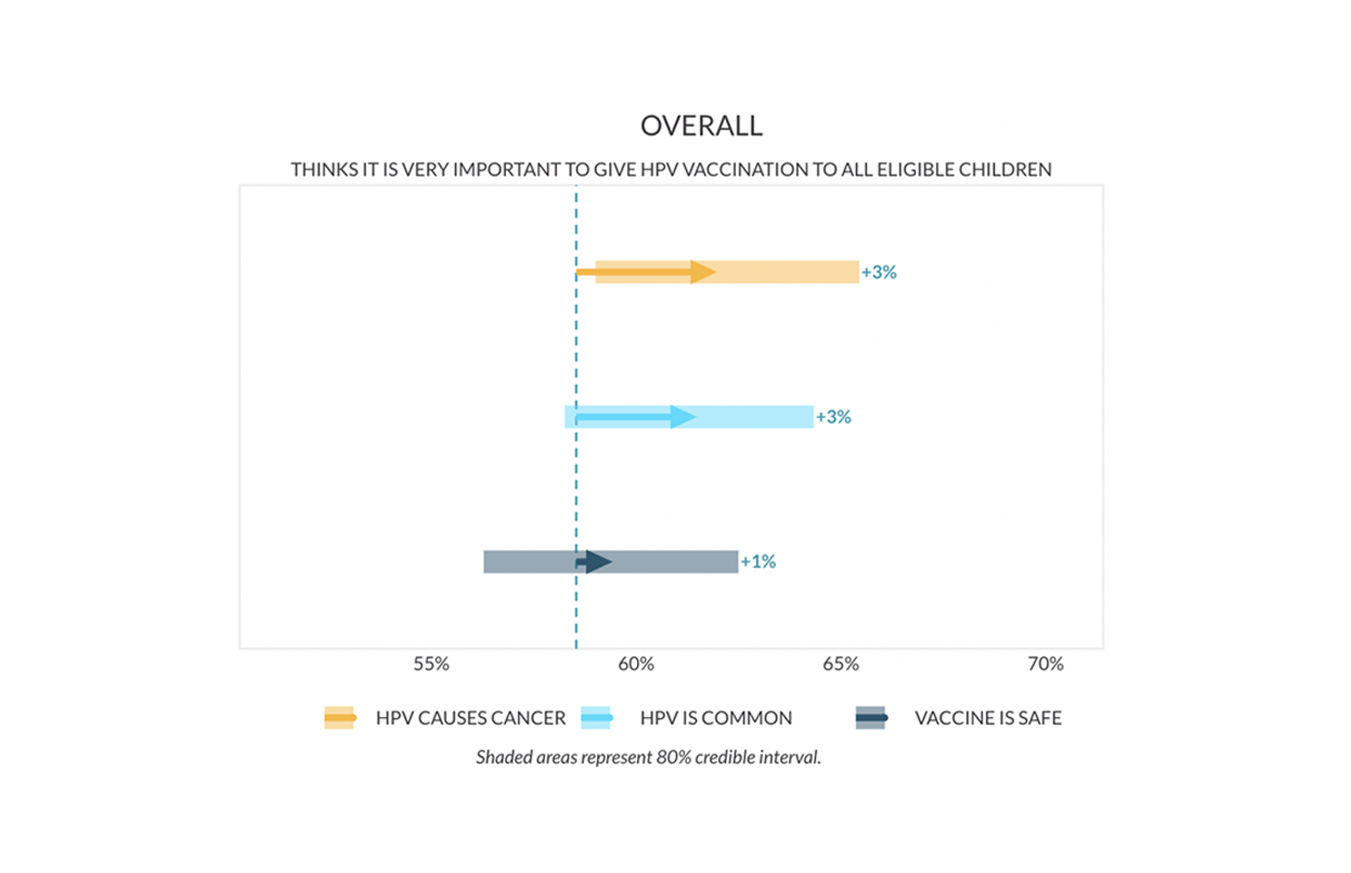
To download the full results of our message test, click the button below:
Methodology
3,954 survey respondents were divided into six groups, five that saw a message related to COVID-19 vaccination, and one control group that did not see a message. Civis asked respondents in each of the five treatment groups how likely they were to get the eventual COVID-19 vaccine seeing one of these messages (or in the case of the control group, seeing no message at all). After data collection, Civis built and ran a statistical model that calculated the impact of each message on support for COVID-19 vaccination, controlling for respondent characteristics.
